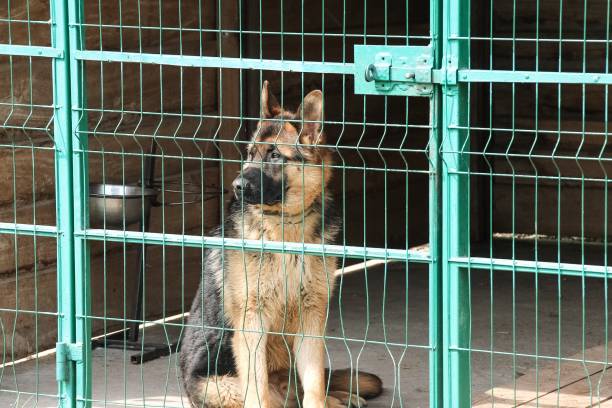Physiological, Physical and Behavioural Changes in Dogs (Canis familiaris) When Kennelled: Testing the Validity of Stress Parameters

Domestic dogs (Canis familiaris) housed in kennelling establishments are considered at risk of suffering poor welfare. Previous research supporting this hypothesis has typically used cortisol:creatinine ratios (C/Cr) to measure acute and chronic stress in kennelled dogs. However, the value of C/Cr as a welfare indicator has been questioned. This study aimed to test the validity of a range of physiological, physical and behavioural welfare indicators and to establish baseline values reflecting good dog welfare. Measurements were taken from 29 privately-owned dogs (14 males, 15 females), ranging in age and breed, in their own home and in a boarding kennel environment, following a within-subjects, counterbalanced design. Pairwise comparisons revealed that C/Cr and vanillylmandelic acid:creatinine ratios (VMA/Cr) were higher in the kennel than home environment (P = 0.003; P = 0.01, respectively) and were not associated with differences in movement/exercise between environments. Dogs’ surface temperature was lower in kennels (P = 0.001) and was not associated with ambient temperature. No association with age, or effects of kennel establishment, kennelling experience, sex or source were found. Dogs were generally more active in kennels, but showed considerable individual variability. C/Cr and 5-HIAA:creatinine ratios (5-HIAA/Cr) were negatively correlated with lip licking in kennels. Baseline values for each parameter are presented. The emotional valence of responses was ambiguous and no definitive evidence was found to suggest that dogs were negatively stressed by kennelling. It was concluded that C/Cr and, particularly, VMA/Cr and surface temperature provide robust indicators of psychological arousal in dogs, while spontaneous behaviour might be better used to facilitate interpretation of physiological and physical data on an individual level.
Part, C.E., Kiddie, J.L., Hayes, W.A., Mills, D.S., Neville, R.F., Morton, D.B., and Collins, L.M. (2014). Physiological, physical and behavioural changes in dogs (Canis familiaris) when kennelled: Testing the validity of stress parameters. Physiology & Behavior, 133(22), 260-271. DOI: 10.1016/j.physbeh.2014.05.018
Photo: iStock.com/Iryna Zhdanova
View ResourceTopic(s): Breeder Resource, Designs that Support Good Welfare, Environment, Kennel Design